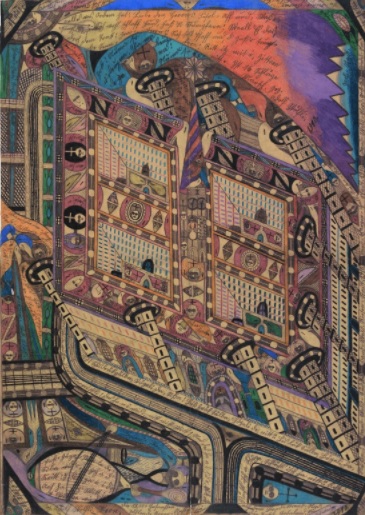Do you believe everyone can be an artist? Have you ever imagined what does the earliest art form look like? Do you find the similarity between your child’s drawing and the ancient human’s painting in the cave? Can “insane” people make artworks?
All of these questions are related to the raw expression of humans. Jean Dubuffet-a French artist coined the term Art Brut (French term) which is translated as raw art. This kind of art deals with the raw emotion or vision that is usually found in the work of the insane, prisoners, children, and primitive artists.
Art Brut is a counter-movement of fine-art that is dominated by academic training. Art brut can be seen as the naïve art that is made outside the academic tradition. That’s why this movement is also called “outsider art”.
The raw artists usually have no formal training. Some of them were “called” to create artworks by a tragedy or event that makes them more sensitive to the forces of darkness or lightness. Religion and spirituality reflection also has a main role in some raw artworks.
The artist’s mind is always in emotional conflicts that are often misunderstood as mental illness. A hypothesis says that they see artworks as a way to find inner peace.
Art Brut also sometimes expresses the human paradoxes, such as a rational but also irrational entity, as an individual but also social, as everything but also nothing, and many other paradoxes.
Der Blaue Reiter (The Blue Rider) is the first group who was interested in raw art. The prominent artists of this group are Wassily Kandinsky, Franz Marc, Gabriele Münter. The Blue Rider has published an Almanac, Der Blaue Reiter Almanach, that included over 140 reproductions of artworks that belong to primitive art, folk art, children’s art, and art of the mentally ill.
Here are some important artworks of Art Brut:

Mental Asylum Band-Copse is a pencil and colored pencil drawing created by Adolf Wölfli in 1910. https://arthistoryproject.com/

Auguste Forestier, “Untitled”, 1935-1949. https://arthur.io/art/auguste-forestier

Gaston Chaissac, “Totem double face”, 1961. https://www.centrepompidou.fr/


![Brandi Jackson Speaks Out Against Leaving Neverland & Oprah on Hollywood Unlocked [UNCENSORED]](https://artstribune.com/wp-content/uploads/2021/03/Brandi-75x75.jpg)